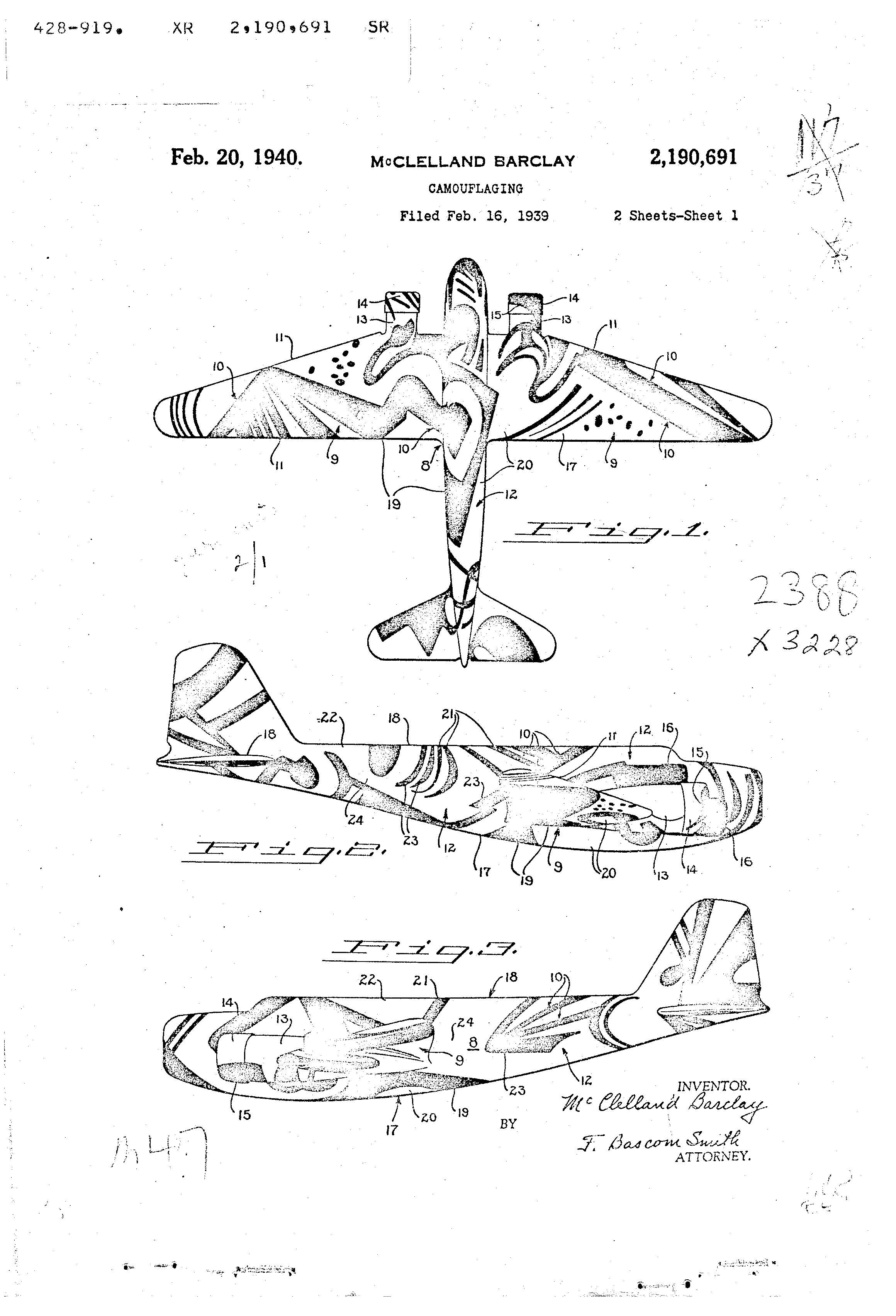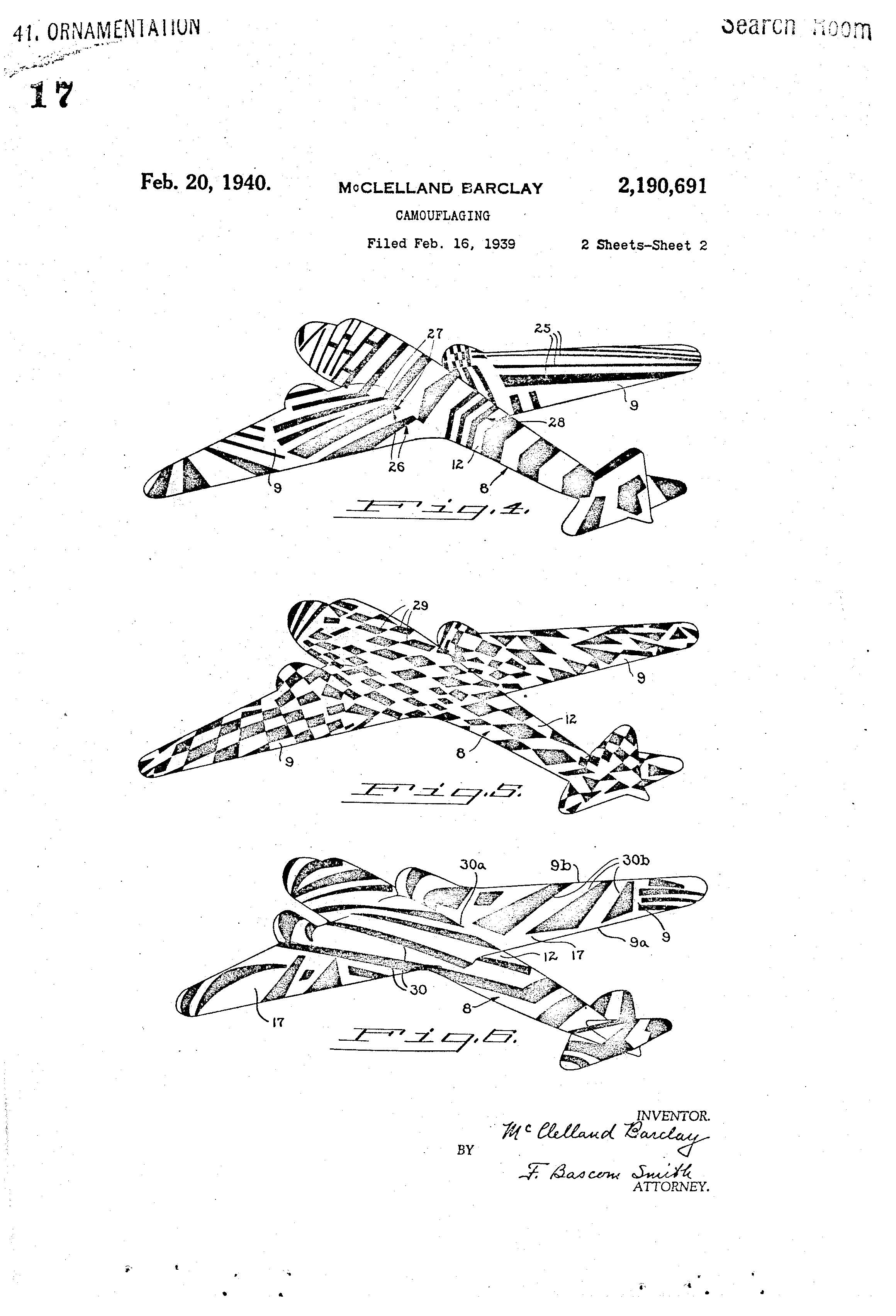Suiter Swantz IP takes a look back at past inventions and inventors with our Patent Of The Day.
On this day in 1939, McClelland Barclay was granted U.S. Patent No. 2,190,691 for a CAMOUFLAGING.
This invention relates to camouflaging and more particularly to a novel method of camouflaging whereby the actual size and shape of a moving body such as an aircraft is caused to become indistinguishable.
It is often highly desirable, particularly in warfare, to confuse an observer as to the size and shape of a moving body and thereby cause said observer to be deceived as to the speed and direction of travel of said body. For example, in aerial combat a definite advantage may be secured over an enemy plane if the pilot thereof can be confused for a few seconds as to the speed, course, size or type of an adversary. In addition, enemy ground defenses are rendered ineffectual against an aircraft when the latter is suitably camouflaged to cause an enemy enemy observer to misjudge the distance from the craft to the ground batteries, or the direction of travel of said craft relative to said batteries. Accordingly, one of the objects of the present invention is to provide a novel method whereby a craft, such as an airplane, has painted. or stencilled thereon a multiplicity of designs of such color and configuration as to secure a desired confusion in the eyes of an enemy observer.
Aircraft camouflaging was first seen in World War I, where it was used as an attempt to conceal the aircraft with colors similar to the background. The trend continued in World War II with spitfire planes using pink as their camouflage color. This color choice would make the plane almost invisible during sunrises and sunsets. The problem with pink was that in order to make sure the planes were rarely seen from above, they were to fly just under cloud cover which made pilots’ jobs more difficult. Camouflaging continued and other countries caught on and decorated their aircraft with nose art. American Air Force pilots were unique in the fact they preferred pretty “pin-up” girls be painted on the sides of their planes. Planes still use camouflaging today, different hues of blues, greys, browns and greens are utilized but there are strict guidelines for the color choices.
Suiter Swantz IP is a full-service intellectual property law firm serving all of Nebraska, Iowa and South Dakota. If you have any intellectual property questions or need assistance with any patent, trademark or copyright matters and would like to speak to one of our patent attorneys please feel free to contact us.


